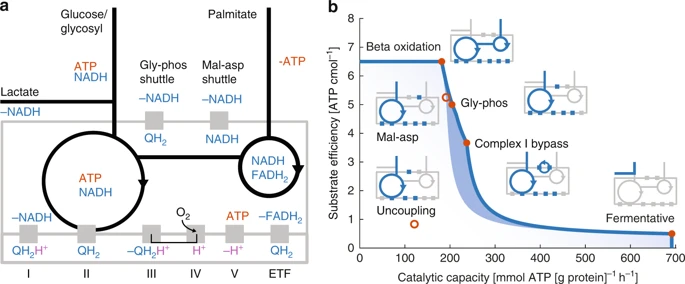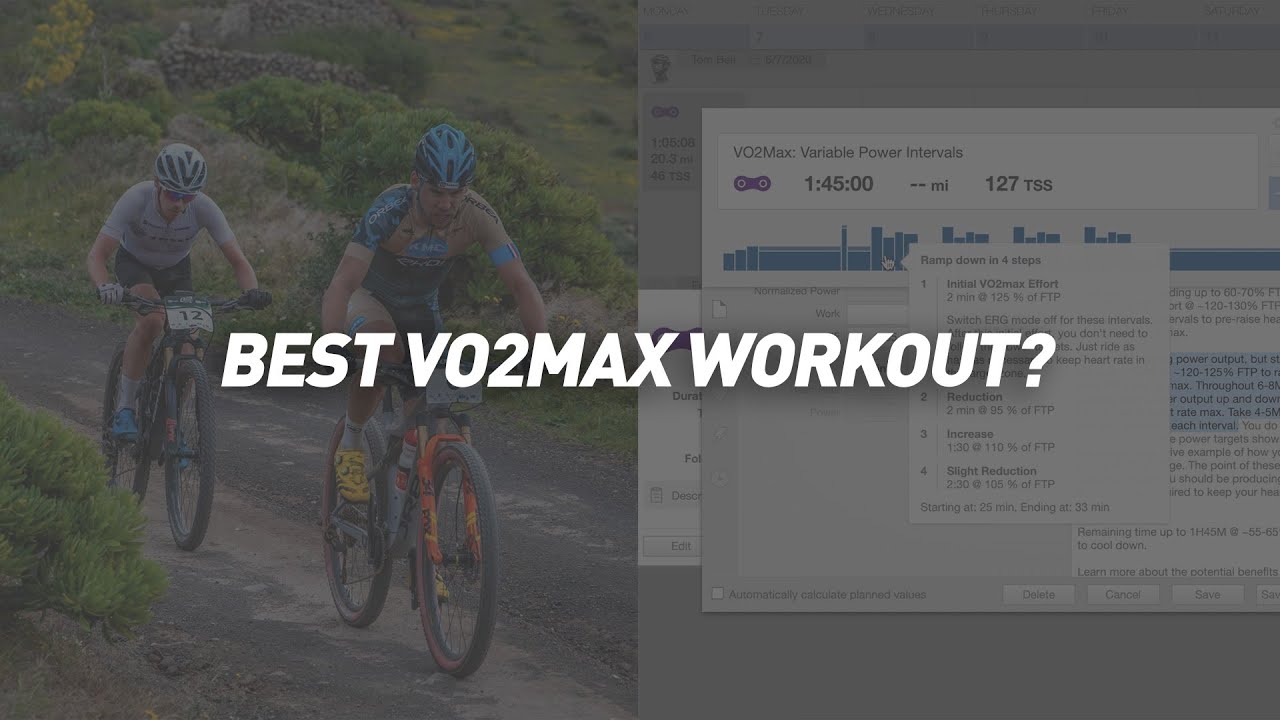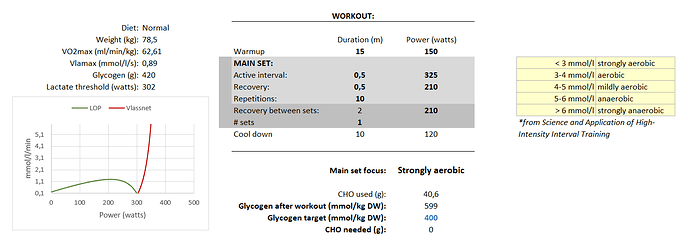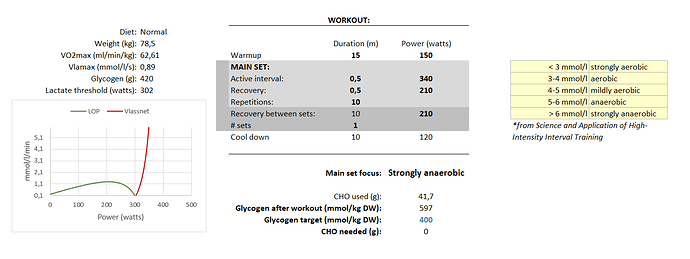Comprehensive blog on this topic! Tx @SpareCycles
HIIT Science is a great resource and provide a lot of free information on their blog & social media. The book is (probably) well worth the purchase, but all the information is freely available in their two papers that led to the book.
Buchheit & Laursen, 2013. High-Intensity Interval Training, Solutions to the Programming Puzzle:
Part I: Cardiopulmonary Emphasis.
Part II: Anaerobic Energy, Neuromuscular Load and Practical Applications.
I’m very interested in this topic as well. From the article I just posted (thanks @david for linking!  ):
):
For example, could depleting those anaerobic pathways early in the hard-start interval tend to cause VLamax to increase, as glycolysis will be preferred by faster fibers to rapidly restore homeostasis? Whereas more gradual, progressive fiber recruitment in an evenly-paced interval may allow greater fat oxidation across more fibers as they begin to contribute directly to mechanical locomotion?
As for 30/15s & intermittent intervals, I’m still thinking it through.
From Ronnestad’s papers: BLa response appears no different to an acute workout and I don’t think RER is reported, so it’s hard to say what’s going on there… After the training intervention peak BLa tended to be higher during performance tests, showing increased accumulation or ‘tolerance’.
W/BLa (a very crude and possibly meaningless measure of fermentative metabolic contribution to power) tended to be lower in the short interval group after training. Suggesting greater oxidative activity relative to glycolysis, ie. more pyruvate was oxidized before needing to be converted to lactate for transport through the blood.
Plus the improved performance at 4mmol BLa (higher power and %VO2max utilization) suggests 30/15s training did decrease VLamax.
And that doesn’t even get into the muscle oxygenation data during intermittent intervals! Which I haven’t seen much of in the literature, but I’ve been experimenting with myself. Definitely some interesting implications for describing what’s going on in the local muscle
Definitely for a coach, but a bit much for an interested amateur despite only being the price of a decent cassette. It’s amazing how we value things differently and illogically.
Hello, I don’t read this in the 2015 paper, can you point me to where you found this ? is it in the latest paper with elite cyclists ?
Do we hypothetize here that the Glycolytic engine has build up ? Without the results of the wingate test with lactate it’s hard to tell… I don’t think the power @ 4 mmol of lacate tell you something on VLaMax, especially knowing that VO2 has risen. Can you give us more explanation on your physiological hypothesis here ? thanks
Thanks Remi. Yes that’s from the group’s recent 2020 paper on elite cyclists. Free download available on Researchgate
Sebastian Weber actually just commented basically the same thing on my article. I just posted my response to him.
Briefly, I have been using ‘VLamax’ as a proxy for something like ‘how much glycolytic, and specifically fermentative (lactate producing) metabolism is contributing at a given intensity or workload’. But that might be a mis-use of the term.
You’re right that the reported data in the Ronnestad et al paper do not show anything related to VLamax, literally as the peak rate of BLa accumulation. But for the reasons given in my comment, it seems to me that enhanced substrate efficiency (greater relative contribution from fat oxidation) at submax would suggest lower VLa(submax) at least.
My question to Sebastian was basically whether a change in VLa(submax) also implies or requires the same directional change to VLamax?  Not sure. Interesting to think through the physiology!
Not sure. Interesting to think through the physiology!
Any thoughts?
Ah ah ah ! If I can make answer like SW now, I am free from their testing protocols and keep my money ;+)
Seriously I find it a “flaw” that there is no published way to estimate VLaMax to challenge his ideas and training regimes. I understand the business aspects of things but I don’t like this and even if I find this fascinating and like reading stuff like your cool blog post, I prefer to spend the money needed in 3-4 Inscyd tests in something else. it’s too expensive for a “mere” algorithm… I guess you might have seen this thread on ST too ? https://forum.slowtwitch.com/forum/Slowtwitch_Forums_C1/Triathlon_Forum_F1/Measuring_VLamax_P6927851/
maybe you can gain efficiency in aerobic metabolism of glucose too, glycolysis is a way but glucose can give entry molecules to the citric cycle too. Training can optimize this too. My knowledge on this is limited but I expect more glycolytic machinery in fast twitch muscle fibers, so the training that lowers VLaMax is more inclined toward shutting down a bit the fast twitch fibers and turning borderline fibers to slow twitch ones
ugh… Thanks for the link, but I can’t get through that ST thread  . No reason to get so defensive! The more ideas we’re open to, the more we can learn.
. No reason to get so defensive! The more ideas we’re open to, the more we can learn.
Yeah definitely enhancing glycolysis would increase metabolic efficiency, as you say since glycolysis can produce more ATP for the same VO2.
I would suggest though that enhanced glycolysis will give you greater oxidative capacity, as more pyruvate can be oxidized and more ATP produced aerobically. But glycolysis has a lower substrate efficiency (ATP per unit of fuel) than fat oxidation. There are so many ways to talk about ‘efficiency’, I need to be more specific.
I seldom go to ST but it’s often like this. If you go over the battle between the 3 coaches there are good gems hidden in it. I find interesting that no one answers my proposition to test my VLaMax by myself. Coaches sells the test…
On efficiency, I am confused. In my mind the most bang for the buck is aerobic glycolysis with glucose being processed through the citric cycle.
The beta oxidation is great because we have so much fat availability but it’s costly, you need more o2 for same return (vs aerobic glycolysis). It’s one of the arguments we find in Louise Burke works having tested a low carb high fat diet in elite walkers and find it inefficient. But double check I might have not understood fully the idea.
Anaerobic glycolysis is great for short efforts but is not “efficient” with a metabolic stand point.
PS having read twice or x4 your comment I see that we just have a terminology issue with efficiency
Would be a useful thought experiment to walk through the various efficiency vs capacity trade-offs along the metabolic pathways. That Nilsson & Flockhart et al article above was a bit mindblowing for me. Now I’m reading some of the older literature on cycling efficiency that Sebastian Weber recommended. Lots of new ideas, and shows me I need to understand the bioenergetics much better. Great discussion!
Hi
I think I have made a mistake in my wording.
Actually glycolysis is entirely without oxygen.
But when you’ve got enough O2 (there are enough NADH,H+) pyruvate goes through the citric cycle, but when O2 is limited, pyruvate is transformed in lactate.
Lactate is pumped out of the cell and is recycled in Acetyl-CoA in the liver and to some extent some organs like the heart burns a bit of lactate also.
Do you agree ?
Yes, glycolysis is immediately anaerobic, produces pyruvate, which is then oxidized aerobically within the local muscle, or converted to lactate for transport through the blood to be oxidized elsewhere (other skeletal muscle, liver, etc).
I’ve wondered if BLa and RER could be combined somehow as a proxy for glycolytic capacity, from substrate utilization and net lactate accumulation. There are formulae to roughly estimate energy production from BLa. I don’t know whether RER would add any value, or whether that’s too far removed from the local energy production.
Hello for sure, the pet of a met cart test when RER is > 1 is when acidosis is buffered.
And a gross proxy for lactate production would be how high the RER goes if the athlete is let continue is effort because some testers stops the test as soon as they see a plateau in VO2max and rer >1
But having fine analysis of glycolysis with RER ? Hum… complicated… met cart is even less available than lactate measuring
Sounds like VCO2 cannot be used as a proxy for muscle metabolism, because of a dissociation between acidosis buffering at the muscle and non-metabolic hyperventilation (↓PaCO2, ↑ VE & VCO2).
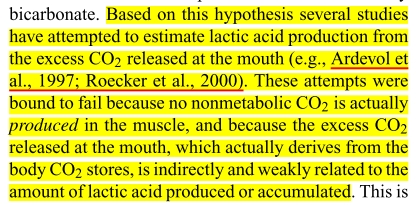

Nice video about hard start VO2 max intervals using power to hit 90-95% max HR instead of a power target.
Hey Remi,
I have created this for myself… maybe it would help you… I put together Mader’s model and some concepts frome the Laursen and Buccheit’s book on a spreadsheet. Input data are VO2max, VLamax from Mader’s model. With his model I am able to estimate lactate production during my workout.
So… if I do 10x30s at 325w (± 110% LT or 85% of VO2max here) / 30s at 210w (my fatmax) I would accumulate ± 1,4 mmol/l of lactate (strongly aerobic). If I change my active intervals to 340w and kept my recovery at 210w I would accumulate ± 12 mmol/l of lactate (strongly anaerobic). I could play with intervals durations as well… So… the main effect of the training would depend of duration and intensity of each interval…
Marcelo
Terrific ! I wish I was as savvy as you to understand Maders’ article, it’s tough stuff !
Would you mind saying a bit more how you constructed the spreadsheet ? Did you measure the VLaMax with a finger prick before and after a all out 15-20s sprint ?
Thank you
PS oh and I see that UA is also a subject of interest we have in common ! signing an article on this with RJ : clap clap clap + I have friends and went to Gainesville recently, I wish we could have a conversation on this along Paines Prairie 
I’m estimating VLamax from a few intervals to exhaustion… from there I’m just using Mader’s model to estimate lactate production, CHO and fat oxidation…
After that I made a small worksheet to calculate lactate accumulation during my workout… so I am able to edit it to target more the aerobic or anaerobic system…
PS: I did my research fellow in RJ’s lab from 2005 to 2007 (mostly UA related)… after that I moved back to Brazil. Now I’m in private practice only and my hobby is cycling  .
.
Do you mind posting a link to the paper for “Mader’s model”. This sounds like something worth exploring. Tx.
Hey David,
Sure… It is a paper from 1986…
Marcelo
